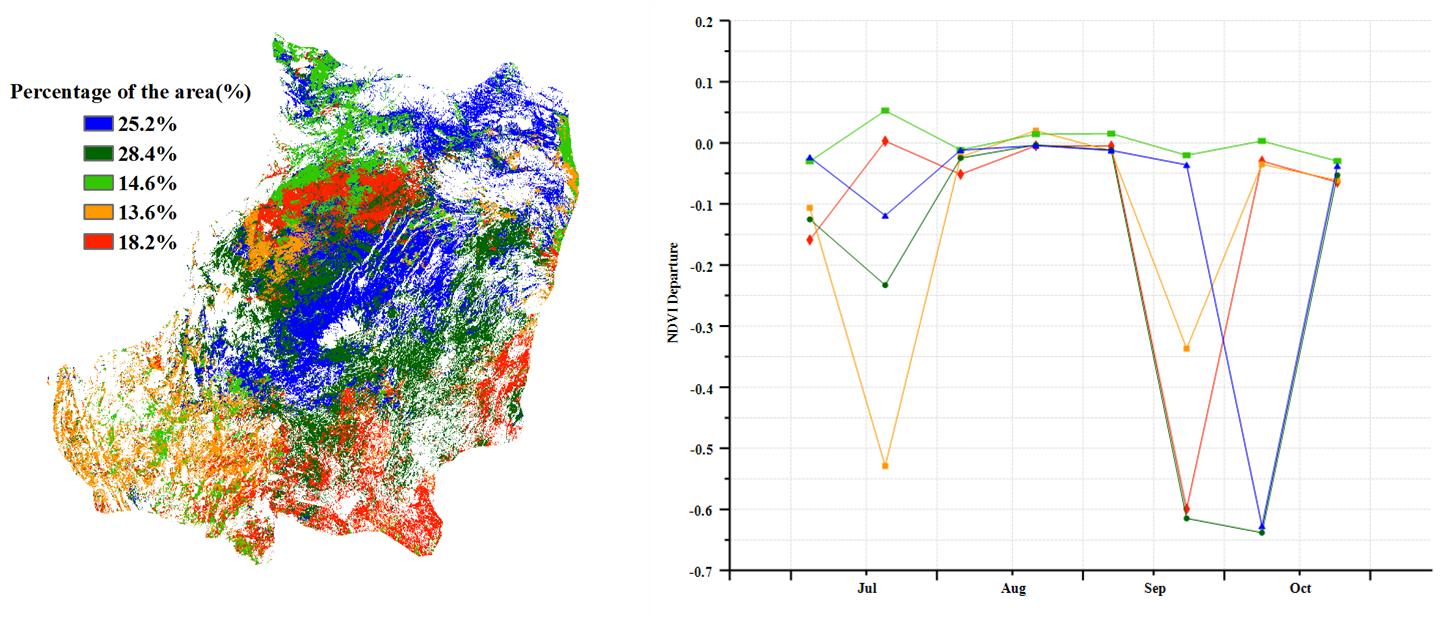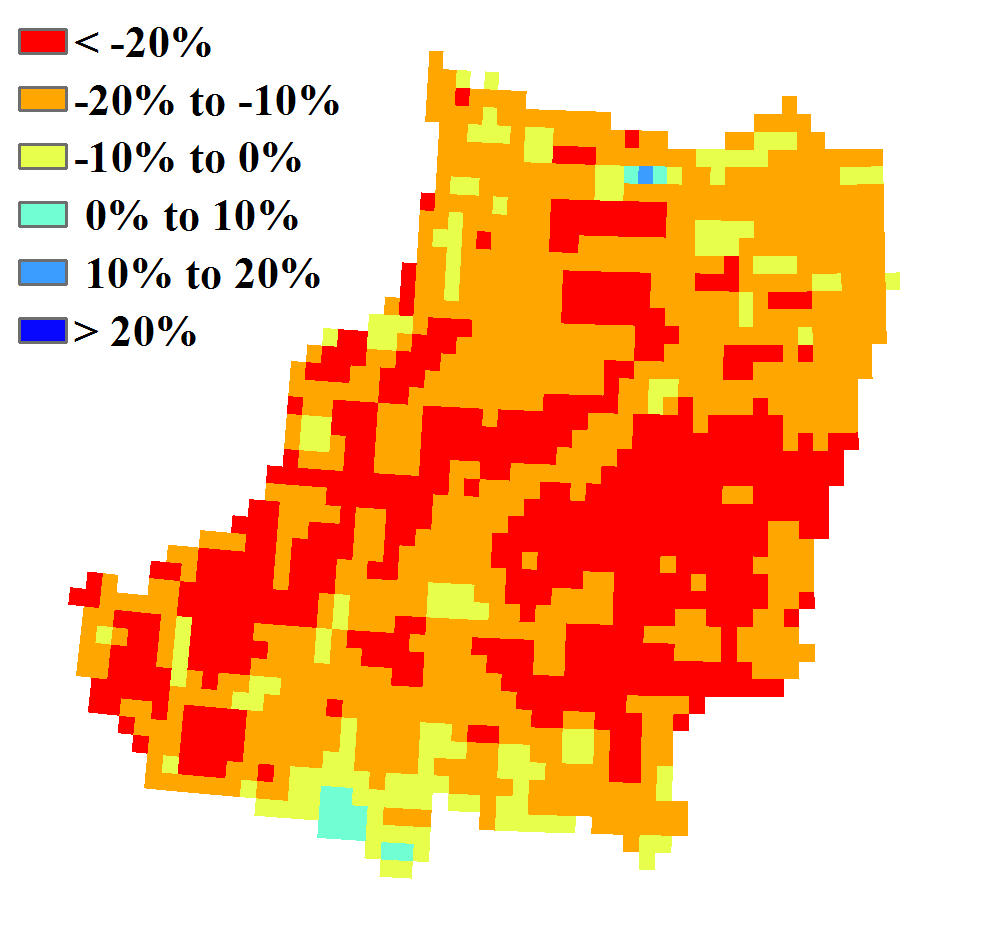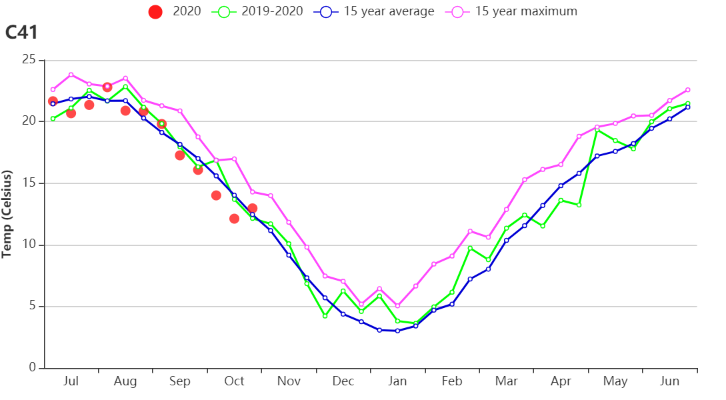
Bulletin
wall bulletinMenu
- Overview
- Country analysis
- Afghanistan
- Angola
- Argentina
- Australia
- Bangladesh
- Belarus
- Brazil
- Canada
- Germany
- Egypt
- Ethiopia
- France
- United Kingdom
- Hungary
- Indonesia
- India
- Iran
- Italy
- Kazakhstan
- Kenya
- Cambodia
- Sri Lanka
- Morocco
- Mexico
- Myanmar
- Mongolia
- Mozambique
- Nigeria
- Pakistan
- Philippines
- Poland
- Romania
- Russia
- Thailand
- Turkey
- Ukraine
- United States
- Uzbekistan
- Viet Nam
- South Africa
- Zambia
- Kyrgyzstan
Authors: 超级管理员 | Edit: zhuliang
The reporting period covers the sowing of winter wheat in southwestern China, at a time when summer crops (including semi-late rice and maize) have reached maturity. According to the regional NDVI profile, crop condition was generally slightly below the 5-year average.
On average, rainfall was above the fifteen-year average (RAIN +17%), whereas radiation was below (RADPAR -18%). Temperature was close to average (TEMP -0.4 °C). The resulting BIOMSS was 18% below average mainly due to less radiation and local floods. The cropped arable land fraction remained at the same level as in the previous five years, which indicated there was no change in crop planting for this period.
According to the NDVI departure clustering map and the profiles, values were close to average in July, except in Yunnan and neighboring areas in north-western Guizhou. In August, the overall NDVI in the region was close to the average level. RADPAR was below average for Guizhou (-21%) and Yunnan (-15%). Average NDVI throughout the monitoring period was observed in northern Sichuan and Chongqing, where radiation was below average and precipitation above average (See Annex A.11). The maximum VCI reached 0.96, indicating that peak conditions were comparable to the previous five years. At the level of major production zones, the negative impact of above-average rainfall and increased cloud cover is expected to be limited.
Some local flooding and low radiation due to heavy precipitation and the mixture of positive, but predominantly negative departures from the long-term average indicate slightly below-average crop conditions.
Figure 4.12 Crop condition Southwest China region, July - October 2020

(a) Crop condition development graph based on NDVI

(b) Crop condition development graph based on NDVI (c) NDVI profiles

(d) Maximum VCI

(e) Biomass departure

(f) Time series rainfall pofile

(g) Time series temperature profile
